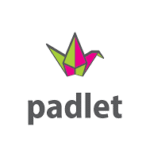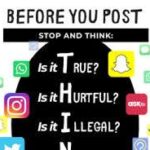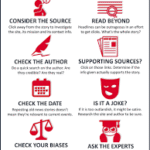Teaching digital citizenship means teaching for real life, online and off.
As a future educator in Saskatchewan, I understand the critical importance of helping students become responsible, empowered digital citizens. Digital tools are woven into the fabric of students’ lives, so it’s up to us as educators to help them develop habits that are safe, ethical, and productive.
Saskatchewan’s Digital Citizenship Education in Saskatchewan Schools guide calls for digital citizenship instruction from Kindergarten through Grade 12, integrated across the curriculum—not just taught once, but practiced every day. I plan to teach this through Mike Ribble’s 9 Elements of Digital Citizenship, supported by the S3 Framework: Safe, Savvy, and Social.
The 9 Elements of Digital Citizenship in Action
Each of the following themes will be integrated throughout my classroom using project-based learning, critical discussions, and real-world connections.
 1. Digital Access
1. Digital Access
Not every student has access to devices or Wi-Fi at home. I’ll provide flexible options for tech-based assignments and advocate for equitable access.
 2. Digital Commerce
2. Digital Commerce
Kids are shopping online, trading virtual goods, and encountering targeted ads. I’ll use role-plays and digital literacy lessons to help them become critical consumers.
 3. Digital Communication & Collaboration
3. Digital Communication & Collaboration
Tools like Google Docs or Padlet will help students work together while learning how to express themselves clearly and respectfully online.
 4. Digital Etiquette
4. Digital Etiquette
Respect online is just as important as offline. I’ll co-create digital community agreements with students to guide tone, kindness, and accountability.
 5. Digital Fluency (Literacy)
5. Digital Fluency (Literacy)
I will explicitly teach students how to spot misinformation, verify sources, and avoid bias—skills vital in the age of “fake news.”
 6. Digital Health & Wellness
6. Digital Health & Wellness
We’ll talk about screen time, sleep, mental health, and physical ergonomics. Students will reflect on their digital habits through journaling and classroom discussions.
7. Digital Law
Copyright, plagiarism, and privacy will be embedded into all research and creative projects. We’ll also address cyberbullying and consent.
 8. Digital Rights & Responsibilities
8. Digital Rights & Responsibilities
Students will learn that the Internet comes with both freedom and obligation, freedom to share ideas, but responsibility to protect others and report harm.
9. Digital Security & Privacy
Through lessons on phishing scams, password creation, and digital footprints, I’ll empower students to protect their data and their reputations.
Fun little game, one of the above images is AI generated, were you able to tell? Did it just blend in with the others?
Bridging Home, School, and the Digital World
Digital citizenship is not a checklist, it’s a way of living that connects students’ learning, relationships, and ethical decision-making across all spaces. That’s why I take a “one-life” approach: the belief that our online and offline lives are not separate, but interconnected.
As the Digital Citizenship Education in Saskatchewan Schools guide explains:
“Taking a one-life approach to technology has both practical and pedagogical advantages; teachers are not only ensuring that students will be safe online, but they are helping to build the bridge between home and school.”
This philosophy calls on educators to support students in:
-
Developing a sense of social responsibility
-
Communicating effectively and ethically
-
Using digital tools as lifelong learners
-
Access and evaluate digital information critically
-
Collaborate and connect in global contexts
-
Advocate for safe, legal, and ethical digital participation
Whether we’re researching current events, building podcasts, or engaging in classroom blogs, my students will learn that how we act online is a direct reflection of who we are. Respect, responsibility, and empathy will be the heart of our classroom culture, because these aren’t just digital skills, they’re life skills.
Final Thoughts
To truly prepare students for the world they’re growing up in, we must teach them not just how to use technology, but how to use it well.
I’m committed to helping my students become safe and socially responsible digital citizens because digital citizenship isn’t just a subject it’s a way of living .

